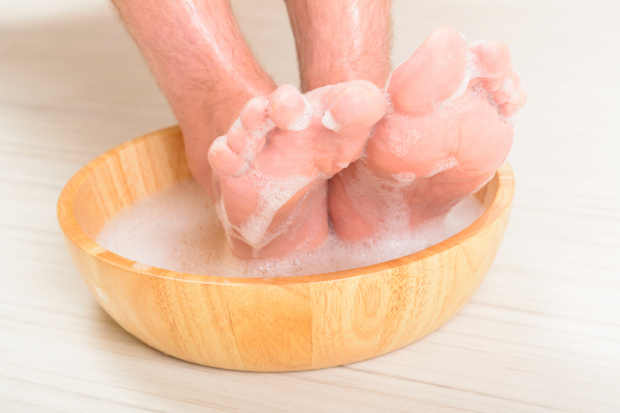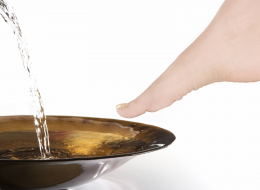Hot Tips Winning Winter Foot Care for Diabetics
Wintertime doesn’t just bring parties for hosting and marshmallows for toasting. The super chilly season also brings about a list of special cold weather foot tips for people with diabetes.
Numbness and decreased circulation are problems that can plague diabetics year round, but they’re especially problematic during the wintertime, when keeping your feet at just the right temperature is extremely important. Most diabetic patients experience loss of sensation in their feet, so it’s important that they inspect them on a daily basis for sores, ulcerations and signs of infection. But when cold weather hits, there are additional steps to winter foot care for diabetics that need to be taken, because diabetics may not realize their feet are too hot or too cold, which can lead to gruesome burns, frostbite and possible amputation. So read on for diabetic foot care tips that will ensure a happy, healthy winter.
Choose Proper Footwear
Cold winter temperatures combined with decreased circulation can leave patients with diabetes especially susceptible to foot ulcers and frostbite. Therefore, it’s important to choose cold weather shoes and boots that provide proper warmth, protection and dryness in rain, snow, sleet and ice. The shoes should have ample padding but be roomy enough so as not to restrict blood flow and circulation to the feet. It’s also recommended that diabetics avoid man-made materials and other materials that create lots of foot sweat.
Wear Appropriate Socks
It’s important for diabetics to choose breathable socks that will keep their feet warm and dry. It’s especially helpful to choose wool or moisture wicking socks to help control foot sweat that may create an extra chill. You can usually tell if your feet are being exposed to too much moisture by looking at them: Paleness and skin wrinkling are common signs of over-saturation.
Remove Wet Socks and Shoes Right Away
Diabetics should always do their best to avoid wintertime puddles, snow piles and anything else that can make their shoes and socks wet, but sometimes moisture is unavoidable. It may be a good idea to carry an extra pair of socks, as removing wet or damp socks and shoes as soon as possible can decrease the chance of infections and other irritating conditions from invading the feet. When the shoes do get wet, thoroughly dry them by placing them next to heater or be sure to wear a different, dry pair the following day. If you do dry your shoes by a heater, make sure they're not too hot before placing them back on your feet.
Use Caution When Using Warming Devices
Diabetics with neuropathy may not be able to feel temperature, so it’s important to use caution when using warming devices like heating pads, electric blankets and heated massagers. Always use a thermometer or have a friend or family member check the temperature to make sure it’s not so hot it will burn. Also use caution when warming the feet near radiators and fires.
Test Water Temperature With An Elbow or Thermometer
Diabetics should never use their feet to test water temperature, as they can easily get burned and not realize it. It’s best to use an elbow — or better yet — a thermometer to check water temperature for winter baths.
Use Hydrating Foot Creams
Cold weather, dry air and heaters have a tendency to dry out the skin, so it’s recommended that people with diabetes use super hydrating foot creams in the winter to avoid dry skin susceptible to corns, calluses and cracks that could lead to hard-to-treat infections. However, try to avoid applying too much moisturizer between the toes because too much moisture makes them vulnerable to fungal and bacterial infections.
RELATED: More Ways Diabetics Can Keep Their Foot Skin Super Soft
Engage In Light Exercise
Cold weather can wreak havoc on exercise routines, as many people choose to sit indoors where it's warm rather than go out for walks and other leg-stretching exercises. But sitting around can lead to increased swelling of the feet and ankles, so if a diabetic patient plans to stay inside, he or she should engage in a few basic leg exercises to keep the blood from pooling.
Follow A Daily Foot Care Routine Year Round
In addition to the above winter foot care tips, diabetes patients should follow a regular daily foot care plan that includes inspecting the feet every day, keeping them thoroughly washed and dried, properly trimming the toenails, wearing proper footwear and controlling glucose and blood sugar levels. Speak with your podiatrist about creating a daily foot plan for you, because having happy feet means having a happy life!
Notice concerning medical entries:
Articles having medical content shall serve exclusively for the purpose of general information. Such articles are not suitable for any (self-) diagnosis and treatment of individual illnesses and medical indications. In particular, they cannot substitute for the examination, advice, or treatment by a licensed physician or pharmacist. No replies to any individual questions shall be effected through the articles.







